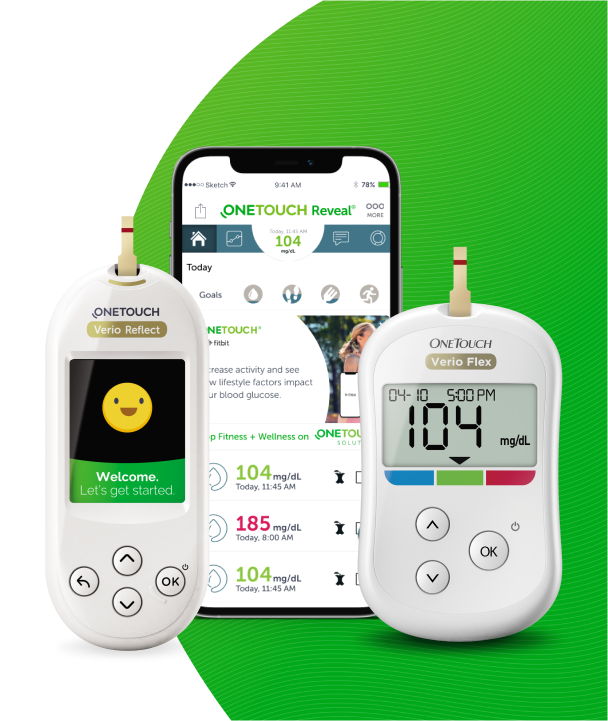What are the complications of diabetes?
Diabetes can lead to complications that affect many parts of the body, including the brain, eyes, heart, kidneys, and nerves. Diabetes complications can be long-term (chronic) or short-term (acute).
Long-term complications can happen when blood glucose values remain high over a long period of time. Keeping blood glucose levels as near normal as possible, along with getting regular check-ups and blood tests, may help delay or prevent long-term diabetes complications. Some of the possible long-term complications of diabetes include the following:
Eye Disease
Many people with diabetes develop some degree of eye disease or retinopathy. Diabetic retinopathy is caused by damage to the blood vessels that supply the retina. The exact mechanisms for this damage are complex, but high blood glucose levels over time are the overarching cause. Diabetic retinopathy can impair vision or cause blindness. Diabetic eye disease can be quite advanced before it affects vision, so it is important that people with diabetes have eye tests on a regular basis. If caught early, treatment can prevent blindness.
Oral Health
People with diabetes have a higher risk of developing oral health problems. Inflammation of the gums (periodontitis) is more prevalent in people with diabetes than people without diabetes. Periodontitis can cause tooth decay and loss and can lead to other complications, such as mouth infections and even heart disease. In addition, chronically elevated blood glucose levels can cause dehydration leading to dry mouth. Good oral hygiene can help improve overall glucose control, prevent tooth decay and loss, and may help prevent some other diabetes complications.
Cardiovascular Disease
Cardiovascular disease is the major cause of death and disability among people with diabetes. Elevated blood glucose levels have been shown to increase both small and large blood vessel disease. Cardiovascular disease can take many forms. These may include:
- Angina (chest pain or discomfort)
- Heart attack
- Stroke
- Peripheral artery disease (reduced blood flow to limbs)
- Congestive heart failure (heart weakness that leads to a fluid build-up in the lungs and other body tissues)
In addition to high glucose levels, high blood pressure, high cholesterol, obesity, lack of exercise, poor nutrition, stress and sleep disorders (all common in diabetes) are some of the factors that increase the risk for cardiovascular disease. Most of these risk factors can be modified.
Kidney Disease
Diabetes is one of the leading causes of chronic (long-term) kidney disease. This is caused by damage to small blood vessels in the kidneys (known as nephropathy) and results in the kidneys not working well or even failing altogether.
Kidneys are essential to life because they help filter toxins from the blood and help regulate blood pressure. Chronic kidney disease develops in stages. If it progresses to later stages, interventions like dialysis may be required. Luckily, controlling blood glucose levels and blood pressure greatly decreases the risk for diabetic kidney disease. There are also many medications which have now been shown to prevent and treat the kidney disease in diabetes but good glucose management is key.
Pregnancy Complications
Women with any type of diabetes are at risk for several problems during pregnancy. High glucose levels can affect the development of the fetus and put both mother and baby at risk for complications both during pregnancy and after delivery. However, if diabetes during pregnancy is closely monitored and treated, outcomes are excellent for baby and mother in most cases.
High blood glucose levels in the mother during pregnancy cause higher blood glucoses in the fetus and subsequent elevated insulin levels in the fetus, which can cause the baby to become larger than usual especially at term. This can lead to injuries to the baby and mother during delivery; it can also lead to low blood glucose (hypoglycemia) in the baby after birth.
Children who were exposed to high blood glucose in the womb are at higher risk for developing type 2 diabetes and overweight conditions later in life. Collaboration with an obstetrics professional is essential for managing blood glucose levels in pregnancy. Careful monitoring of blood glucose during pregnancy is essential. For women with known diabetes prior to pregnancy, monitoring and good glucose control should start before pregnancy.
Nerve Damage
Nerve damage (neuropathy) may occur due to prolonged high blood glucose levels and can result in damage to any nerve in the body. The most common form is peripheral neuropathy, which mainly affects the sensory nerves in the feet. This can lead to numbness, pain, tingling and loss of sensation and position sense.
Neuropathy can allow minor injuries to go unnoticed, leading to foot ulcers, serious infections and, in some cases, amputations. Nerve damage can also lead to sexual and erectile dysfunction, as well as problems with digestion, urination, and several other essential functions.
Diabetic Foot
In addition to nerve damage, people with diabetes can experience problems with poor circulation in their extremities because of damage to blood vessels. These problems increase the risk for ulcers and infection. If the problems become severe enough and are left untreated they can eventually lead to limb compromise or even loss.
With good blood glucose management, however, a large proportion of such serious complications could be avoided. To keep feet and extremities healthy, it is important that people with diabetes examine their feet regularly to identify problems early and get regular foot examinations from a healthcare professional.
Hypoglycemia and Hyperglycemia
Other diabetes complications can be related to low or high blood glucose levels. Both hypoglycemia and hyperglycemia can lead to symptoms and problems which can have a significant impact on health both in the short-term and long-term.
Acute changes in blood glucose often occur suddenly and if severe and not treated properly can be life-threatening. Fortunately, hypo and hyperglycemia can most often be prevented or treated quickly if you and your loved ones know what to look out for and what steps to take.
Hypoglycemia: Low blood sugar
Hypoglycemia means low blood glucose and can occur as a complication of diabetes treatments and associated conditions. It is sometimes called a "hypo" and can happen at any time during the day or night. When your body doesn’t have enough glucose to use for energy, usually when your blood glucose level is 70 mg/dL or lower, you may experience either mild to severe symptoms due to hypoglycemia.
Signs and symptoms of low blood sugar include:
- Sudden, extreme hunger
- Headache
- Shaking/trembling
- Weakness/tiredness
- Cold sweat
- Fast heartbeat
- Anxiety/nervousness
- Irritability
What to do if you have low blood sugar:
- Check your blood sugar to confirm that it is 70 mg/dL or below.
- Apply the 15/15* rule:
- Have 15 grams of a quick-acting carbohydrate that contains glucose, for example a small glass of fruit juice, three to four teaspoons (1 tablespoon) of sugar in water, glucose gel, or glucose tablets (see label for 15 grams amount).
- Wait 15 minutes and check your blood sugar again.
- If your blood sugar level is still low, continue to:
- Alternate taking 15 grams of glucose with waiting 15 minutes and rechecking your blood sugar until it reaches an acceptable target.
- Be sure to eat your next meal or a snack to prevent another low blood sugar reaction.
- If nausea, vomiting or change in mental status are experienced or observed this should be treated as an emergency. Administer glucagon, call 911 and your doctor immediately if these symptoms occur. Do not force fluids or foods on a person who is unable to swallow normally.
- If symptoms persist or worsen or reoccur, call your doctor or healthcare provider or 911.
- If you are using medications that can cause severe hypoglycemia your doctor may prescribe further emergency medication to treat severe hypoglycemia.
Untreated hypoglycemia can progress to changes in mental status, causing extreme confusion, loss of consciousness and seizures, in some cases even without the earlier symptoms of low blood glucose. This is called "hypoglycemia unawareness". It is a good idea to know your symptoms of hypoglycemia and always be prepared to treat them quickly, especially if you take insulin.
Your loved ones and friends should know the signs of low blood sugar and how to treat hypoglycemia in case of an emergency whenever you’re unable to treat yourself. Your healthcare professional can help teach your family and friends about diabetes emergencies and how to prepare for them.
Hyperglycemia: High blood glucose
Hyperglycemia means high blood glucose and has many causes. Generally speaking, high blood glucose can occur when the balance between your food, activity, or insulin is altered. It can also happen when you are unwell or under stress. Hyperglycemia may be a sign of infection, lack of oxygen or other illness. Certain medications such as steroids and others can also cause elevated glucose. Once you develop high blood glucose levels, you may be more prone to infection which can cause your blood glucose level to rise even more. Hyperglycemia might be a warning sign and should be evaluated if new, or if blood glucose levels are significantly higher than usual or if persistent.
Signs and symptoms of hyperglycemia:
Hyperglycemia or high blood glucose is a hallmark of uncontrolled diabetes and, therefore, its symptoms are the same as the symptoms of diabetes. These include:
- Frequent urination
- Excessive thirst and/or hunger
- Dry mouth
- Unexplained weight loss
- Blurred vision
- Lack of energy and extreme fatigue
What to do if you have high blood sugar:
- Call your healthcare provider to see if a change in medication is needed or a medical visit.
- Check your blood glucose regularly.
- Drink more water to prevent dehydration.
- Do moderate exercise.
- Reduce food portions in the meals that follow.
Diabetic ketoacidosis (DKA) happens when high levels of ketones build up in your blood. Ketones are produced when there's a shortage of insulin and the body breaks down fat for energy.
This happens because the body is unable to use glucose when there is little or no insulin and it is forced to burn fat to survive. Signs and symptoms of this condition include difficulty breathing, rapid breathing or shortness of breath with a fruity-smelling breath, nausea, vomiting, positive ketones in urine or blood, and a high blood glucose level. DKA can also occur without hyperglycemia in patients on certain medications. Ask your doctor.
Diabetic ketoacidosis is an emergency condition that needs immediate attention. It usually requires treatment in the hospital. You should call a medical emergency phone number or go to the nearest hospital when you suspect you have DKA.
You can detect this condition by taking a simple urine or blood test that is available from pharmacies to check for ketones. Ask your healthcare provider for advice if you have detected ketones in your urine or blood.
Hyperosmolar hyperglycemic state (HHS) is an emergency condition usually seen in older people with very high blood glucose. Typically, an underlying illness such as pneumonia, or a urinary tract or other infection is the cause. Difficulties following a diabetes treatment plan may also trigger the problem.
HHS causes severe dehydration, and if left untreated, can lead to seizures, coma and even death. Other signs and symptoms include increased urination, extreme thirst, fever, and vision changes.
HHS is an emergency condition that needs immediate attention. You should call a medical emergency phone number for help or go to the nearest hospital.
To help prevent this condition, check your blood glucose regularly and more often when you’re sick. Talk with your healthcare provider about when and how often to test during illness and what your target glucose range should be.
How can you prevent diabetes complications?
Diabetes can lead to complications, both short-term (acute) and long-term (chronic).
A comprehensive and individualized diabetes management plan can help prevent diabetes-related health problems. A balance of both medical and lifestyle interventions is the key to successful diabetes management. This may include:
- monitoring blood glucose levels
- keeping blood glucose, blood pressure and cholesterol levels in safe target ranges with helpful monitoring, coaching, and support
- getting regular laboratory tests, eye, foot and other exams to detect and treat problems early
- focusing on:
- making healthy food choices
- staying physically active
- taking medication as prescribed by your doctor
- checking your blood glucose levels and keeping them in your target range as recommended by your healthcare provider
- knowing how to prevent and treat diabetes emergencies
Understanding the complications of diabetes is an important part of your diabetes management plan. A team approach to prevention includes individualized care plans and robust psychosocial support.
Once you understand how diabetes might affect your body, you’ll know what complications to look out for. You and your doctor can create a plan to prevent complications and you’ll know what to do if any symptoms of complications occur.
Sources:
Bunch KL, Abdelrahman AA, Caldwell RB, Caldwell RW. Novel therapeutics for diabetic retinopathy and diabetic macular edema: A Pathophysiologic perspective. Frontiers in Physiology. 2022;13. doi:10.3389/fphys.2022.831616
Ahmadinia AR, Rahebi D, Mohammadi M, et al. Association between type 2 diabetes (T2D) and Tooth loss: A systematic review and meta-analysis. BMC Endocrine Disorders. 2022;22(1). doi:10.1186/s12902-022-01012-8
Wu H, Norton V, Cui K, et al. Diabetes and its cardiovascular complications: Comprehensive Network and systematic analyses. Frontiers in Cardiovascular Medicine. 2022;9. doi:10.3389/fcvm.2022.841928
de Bhailís ÁM, Azmi S, Kalra PA. Diabetic kidney disease: Update on clinical management and non-glycaemic effects of newer medications for type 2 diabetes. Therapeutic Advances in Endocrinology and Metabolism. 2021;12:204201882110206. doi:10.1177/20420188211020664
Fu J, Retnakaran R. The life course perspective of gestational diabetes: An opportunity for the prevention of diabetes and heart disease in women. eClinicalMedicine. 2022;45:101294. doi:10.1016/j.eclinm.2022.101294
Dinh Le T, Phi Thi Nguyen N, Tran TT, et al. Diabetic peripheral neuropathy associated with cardiovascular risk factors and glucagon-like peptide-1 concentrations among newly diagnosed patients with type 2 diabetes mellitus. Diabetes, Metabolic Syndrome and Obesity: Targets and Therapy. 2022;Volume 15:35-44. doi:10.2147/dmso.s344532
Doğruel H, Aydemir M, Balci MK. Management of diabetic foot ulcers and the challenging points: An endocrine view. World Journal of Diabetes. 2022;13(1):27-36. doi:10.4239/wjd.v13.i1.27
Amiel SA. The consequences of hypoglycaemia. Diabetologia. 2021;64(5):963-970. doi:10.1007/s00125-020-05366-3
Shahid W, Khan F, Makda A, Kumar V, Memon S, Rizwan A. Diabetic ketoacidosis: Clinical characteristics and precipitating factors. Cureus. 2020. doi:10.7759/cureus.10792
Aldhaeefi M, Aldardeer NF, Alkhani N, Alqarni SM, Alhammad AM, Alshaya AI. Updates in the management of Hyperglycemic Crisis. Frontiers in Clinical Diabetes and Healthcare. 2022;2. doi:10.3389/fcdhc.2021.820728
American Diabetes Association Professional Practice Committee. 3. prevention or delay of type 2 diabetes and associated comorbidities: standards of medical care in diabetes—2022. Diabetes Care. 2021;45(Supplement_1). doi:10.2337/dc22-s003
American Diabetes Association. Hypoglycemia (Low Blood Glucose). Last accessed online August 5, 2022.
National Institute of Health (NIH). The Diabetes Control and Complications Trial/Epidemiology of Diabetes Interventions and Complications Study at 30 Years: Overview. Last accessed online September 19, 2022.
US-VRF-1900006








